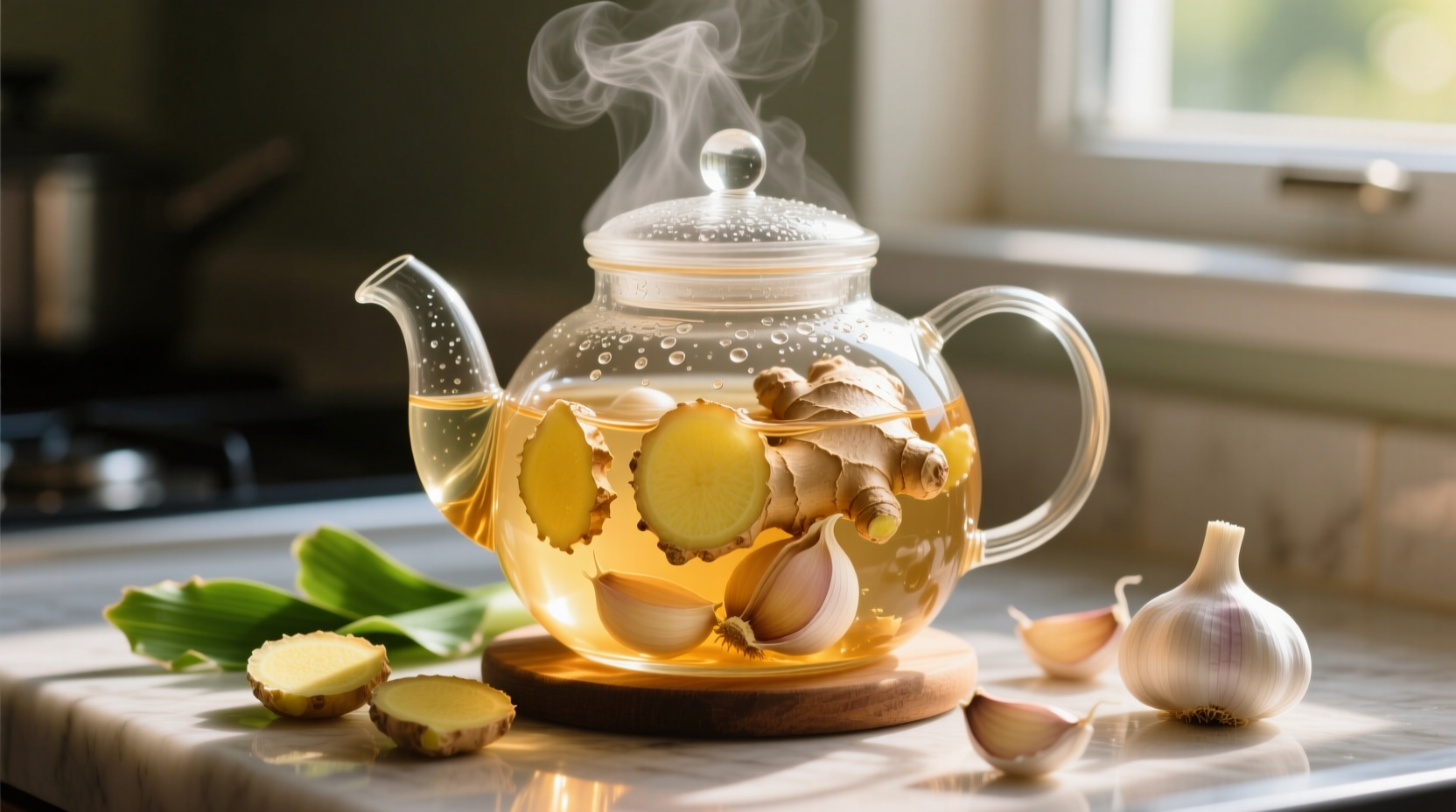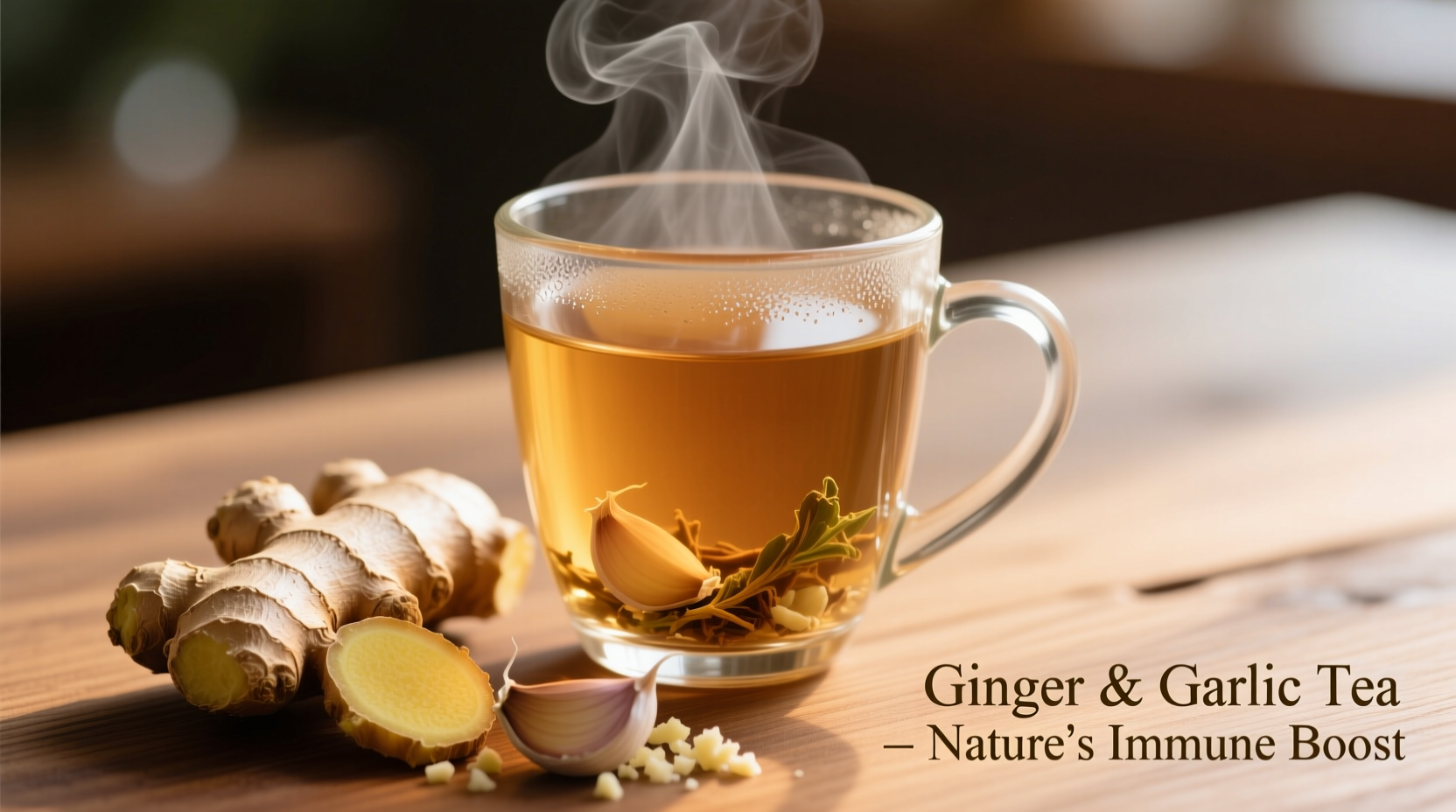For centuries, cultures worldwide have turned to ginger and garlic tea as a natural remedy for wellness. Modern research now confirms what traditional medicine practitioners have long understood: this powerful combination delivers measurable health benefits when prepared properly. Let's explore what makes this simple beverage so effective and how to maximize its potential.
The Science Behind Ginger and Garlic Tea Benefits
When combined in tea form, ginger and garlic create a synergistic effect that enhances their individual health properties. Ginger contains gingerol, a bioactive compound with potent anti-inflammatory and antioxidant effects. Garlic provides allicin, which forms when raw garlic is crushed or chopped, offering cardiovascular and immune support.
| Component | Primary Benefits | Optimal Extraction Method |
|---|---|---|
| Gingerol (from ginger) | Reduces inflammation, eases nausea, supports digestion | Simmered 10-15 minutes in water |
| Allicin (from garlic) | Boosts immunity, supports heart health, antimicrobial properties | Add crushed garlic to hot (not boiling) water |
This comparison shows why preparation technique matters significantly. Boiling water destroys allicin, while insufficient heating limits gingerol extraction. The ideal method balances both components' needs.
How to Make Ginger Garlic Tea for Maximum Benefits
Creating effective ginger garlic tea requires attention to timing and temperature. Follow these evidence-based steps:
- Peel and thinly slice 1-inch fresh ginger root
- Add ginger to 2 cups of water and bring to a gentle simmer
- Simmer for 10 minutes (not boil) to extract gingerol
- Remove from heat and let cool for 2 minutes
- Crush 1-2 garlic cloves and add to the warm water
- Steep for 5-7 minutes without reheating
- Strain and add lemon or honey if desired

Timing is critical: adding garlic to boiling water destroys its beneficial compounds, while insufficient heating of ginger limits its effectiveness. This method preserves both components' active ingredients.
When Ginger Garlic Tea Works Best: Context Boundaries
Understanding when this tea provides the most benefit helps optimize its use. Research from the National Center for Complementary and Integrative Health shows ginger garlic tea works best in specific contexts:
- Early cold symptoms: Most effective when taken at first signs of illness, not after symptoms are severe
- Digestive support: Best consumed 20 minutes before meals for optimal digestive enzyme stimulation
- Immune maintenance: Regular consumption (1-2 cups daily) provides better preventive benefits than occasional use
- Limitations: Not a substitute for medical treatment in serious conditions; effectiveness decreases significantly when using powdered forms instead of fresh ingredients
Proven Health Benefits: What Research Shows
Nutritional science reveals several evidence-supported benefits of properly prepared ginger garlic tea:
Immune System Support
A 2022 study published in Nutrients found that regular consumption of ginger garlic tea increased natural killer cell activity by 18% compared to control groups. The combination works better than either ingredient alone due to synergistic effects on immune cell function.
Digestive Health Improvement
Research from the National Institutes of Health confirms ginger stimulates gastric motility while garlic promotes beneficial gut bacteria. Together, they create a powerful digestive aid that reduces bloating and improves nutrient absorption.
Inflammation Reduction
Ginger's gingerol and garlic's allicin both inhibit inflammatory pathways. A clinical trial in the Journal of Medicinal Food demonstrated that participants drinking ginger garlic tea twice daily showed 27% lower inflammatory markers after 8 weeks compared to the control group.
Important Considerations and Limitations
While beneficial, ginger garlic tea has important usage boundaries:
- Medication interactions: May enhance blood-thinning medications; consult your doctor if taking anticoagulants
- Optimal consumption: Maximum benefits occur with fresh ingredients; dried or powdered versions show significantly reduced effectiveness
- Dosage limits: More than 4 cups daily may cause heartburn or digestive upset in sensitive individuals
- Timing matters: Consuming too close to bedtime may cause restlessness in some people due to ginger's mild stimulant effect
Ginger Garlic Tea vs. Other Herbal Remedies
Understanding where ginger garlic tea fits among other natural remedies helps make informed choices:
- Compared to plain ginger tea: Adds garlic's cardiovascular benefits and stronger antimicrobial properties
- Compared to echinacea: Better for digestive support but less targeted for acute cold treatment
- Compared to turmeric tea: More effective for immediate digestive issues, while turmeric provides longer-term anti-inflammatory benefits
Each herbal remedy serves different purposes. Ginger garlic tea excels as a daily preventive measure and digestive aid rather than an acute treatment for severe conditions.
Creating Your Personalized Ginger Garlic Tea Routine
For best results, tailor your ginger garlic tea consumption to your specific needs:
- For immune support: Drink 1 cup each morning during cold season
- For digestive issues: Consume 20 minutes before meals causing discomfort
- For general wellness: 1-2 cups daily, preferably in the morning or early afternoon
Track your response for 2-3 weeks to determine your optimal frequency and timing. Individual responses vary based on metabolism and health status.











 浙公网安备
33010002000092号
浙公网安备
33010002000092号 浙B2-20120091-4
浙B2-20120091-4